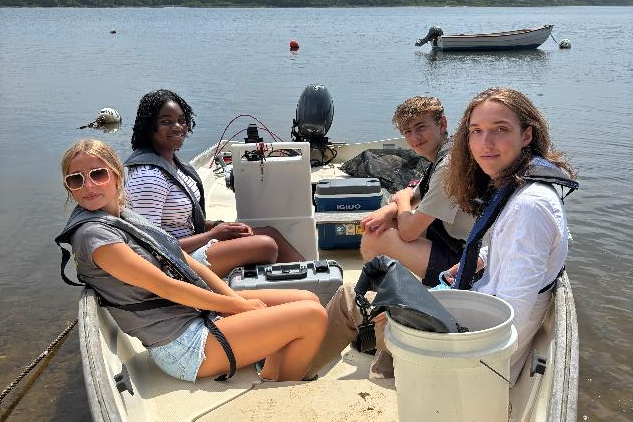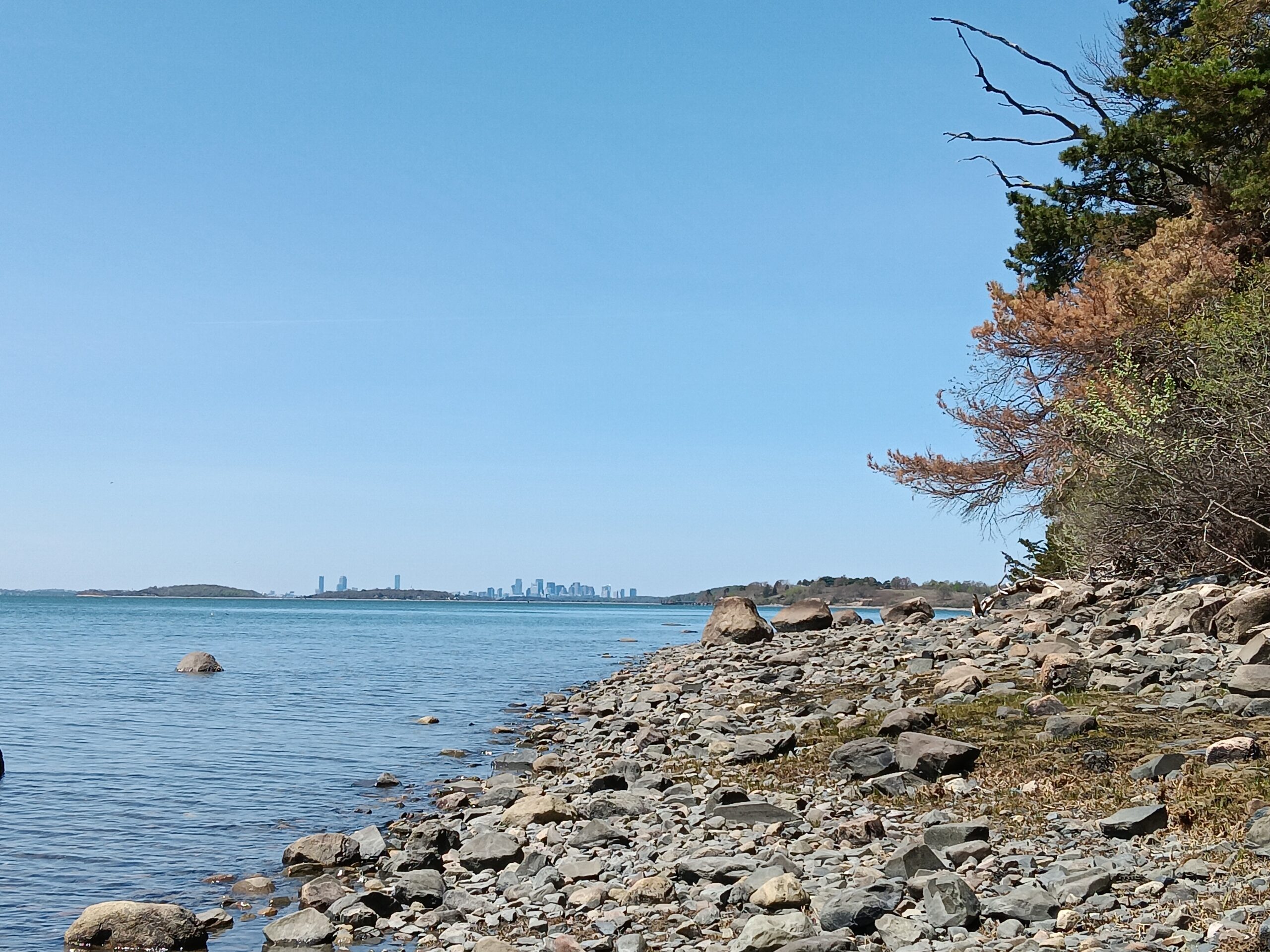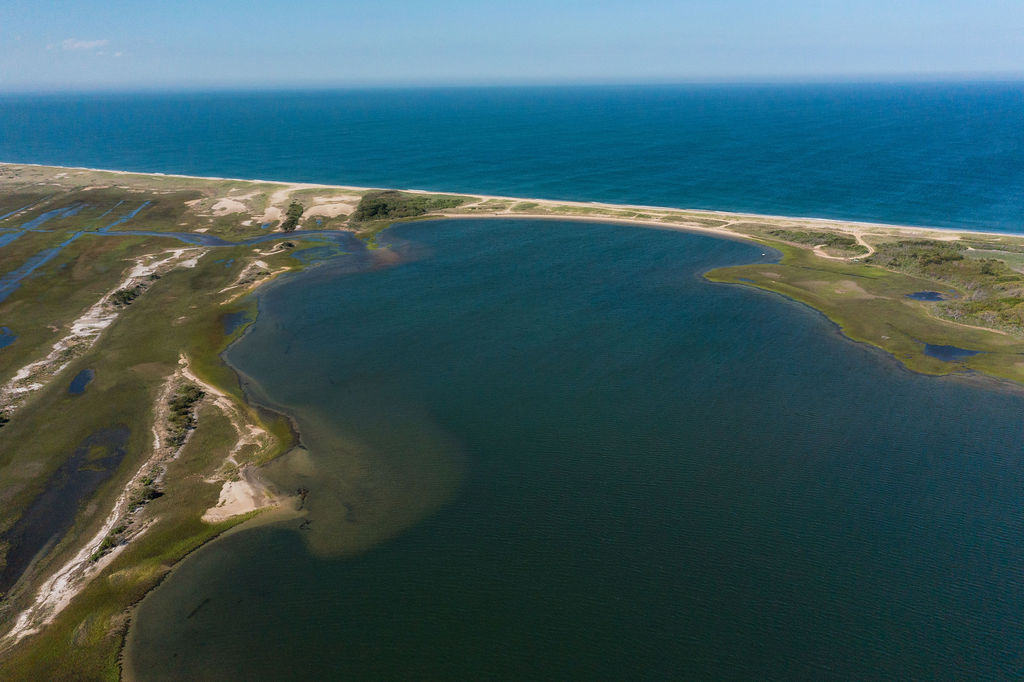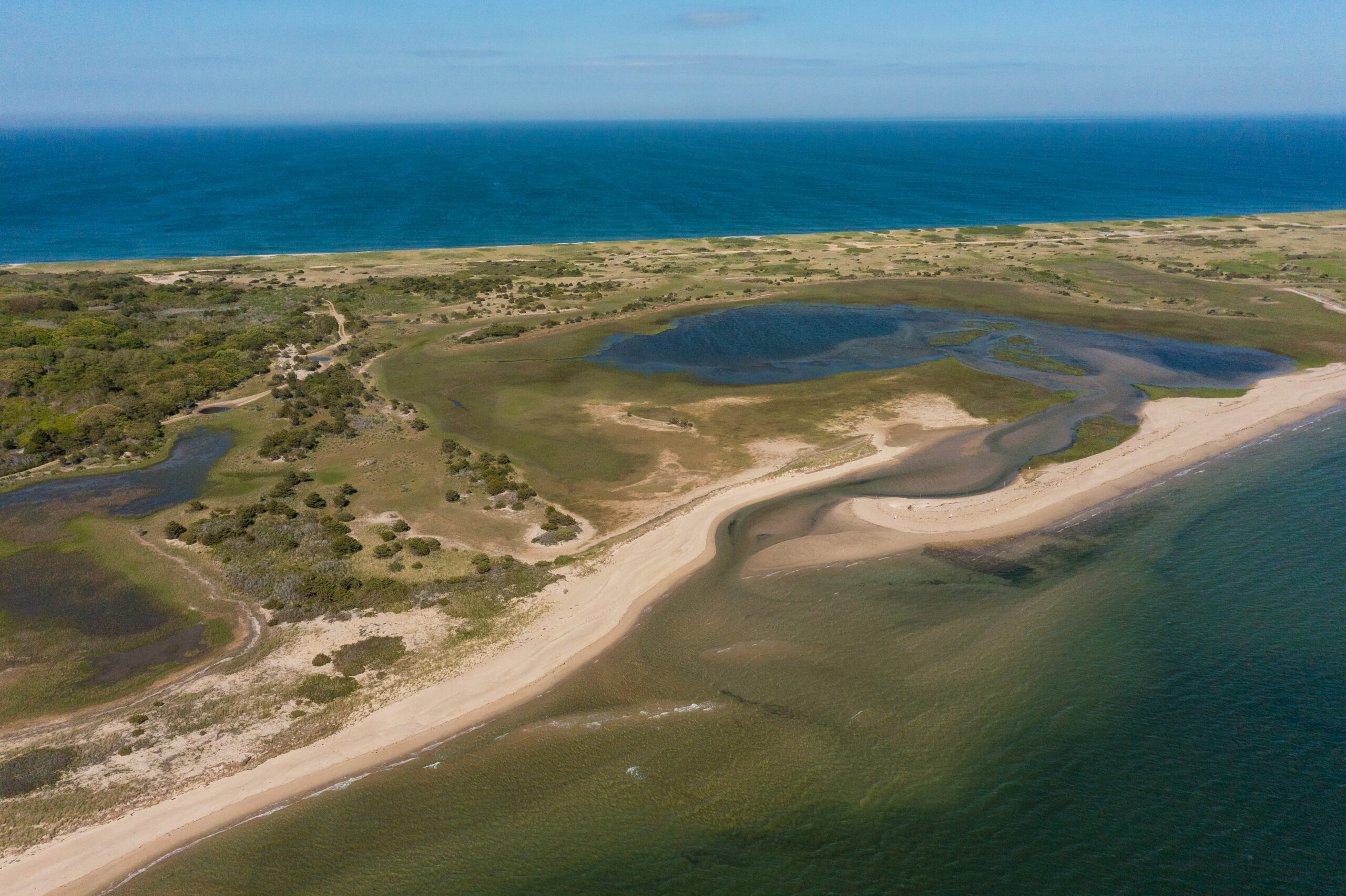
The Haulover, an area of focus for this collaborative work.
The Trustees of Reservations (The Trustees) and Nantucket Conservation Foundation (NCF) have been part of a decades long collaboration to manage the Coskata-Coatue Wildlife Refuge, a critical barrier beach ecosystem on Nantucket Island. In recent years, this has meant jointly investigating the way that climate change is affecting the refuge and its future. NCF and The Trustees are embarking on a new project with the aim of using nature-based solutions to increase resilience on the refuge, while maintaining long-term public access.
In October of 2023, The Trustees and NCF were awarded a National Fish and Wildlife Foundation (NFWF) grant to support barrier beach and salt marsh resilience projects. On Nantucket, funding supports preliminary design work for barrier beach resilience and restoration at Coskata Pond and the Haulover, two potential future breach sites of critical importance on the Refuge. This is a key step in ensuring Coskata-Coatue remains a place for humans and wildlife to thrive for many generations.
Click below to take a brief survey and let us know your thoughts on this project.
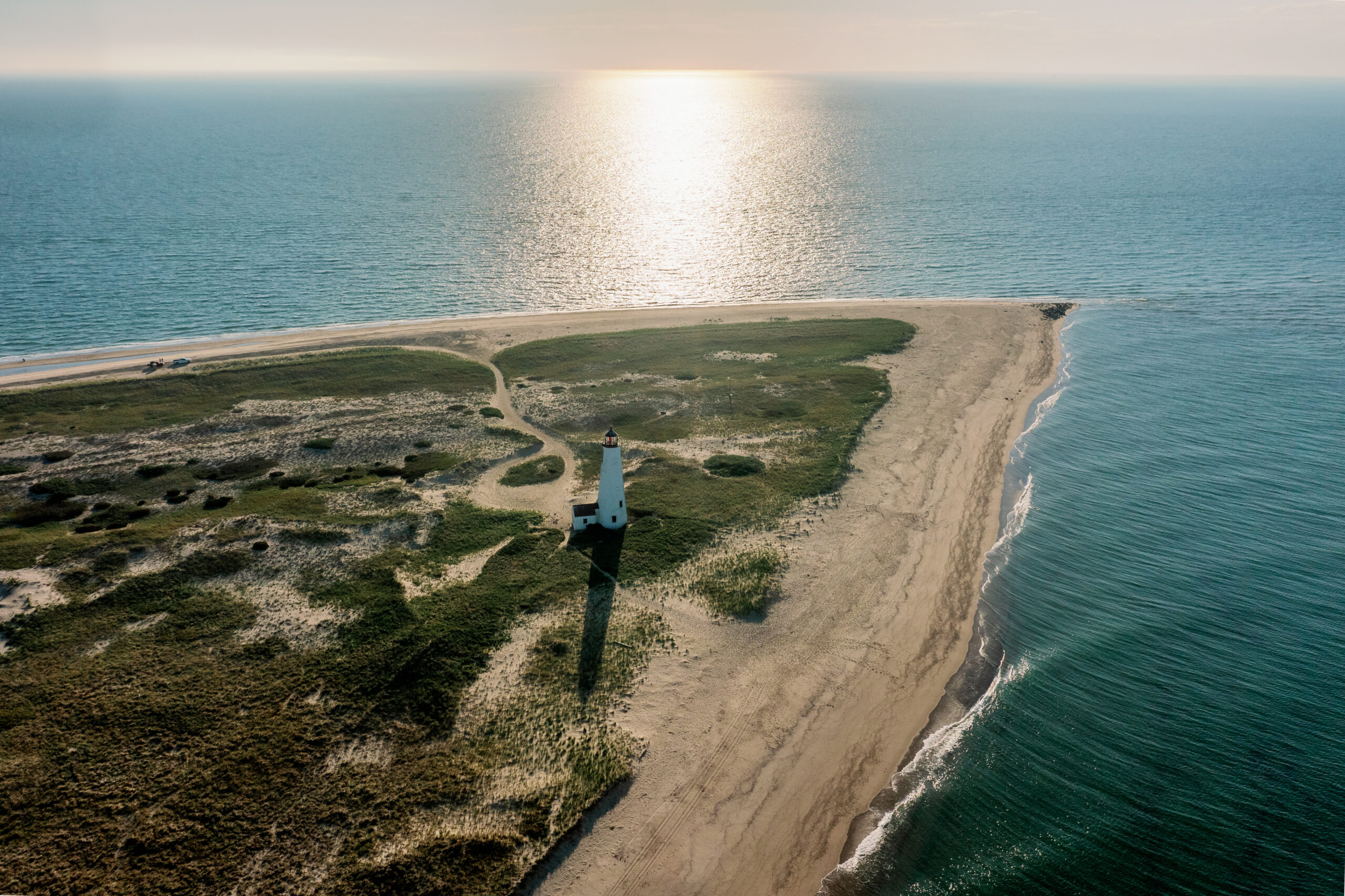
A view of Great Point at Coskata-Coatue.
Coskata-Coatue: A Community Treasure
The Coskata-Coatue Wildlife Refuge is an iconic area of Nantucket, important to the ecology and structure of Nantucket Harbor, with world-renowned geologic features, historical impacts to the island and a primary recreational draw.
A roughly 1500-acre mixture of dynamic coastal ecosystems including sandy beaches, rolling dunes, and forest uplands, the Refuge juts northward of Nantucket’s mainland and curves westward to form Nantucket Harbor. Coskata-Coatue is a barrier beach system shielding Nantucket Harbor from the open ocean, creating a low wave energy harbor that provides places for salt marshes to grow and sand dunes to flourish.
Barrier beach systems enable coastal areas to thrive, providing habitat for fish nurseries, shellfish, and other marine species. The Refuge is home to many unique species, including the prickly pear cactus (only native location in MA), the smooth green snake (on Nantucket, only found on Coatue) and an abundance of red cedar. Federally and state protected shorebirds build their nests near the dunes and on the beaches of the refuge, fledging chicks each summer. The variety of ecosystems on the Refuge provide a destination for saltwater anglers in search of striped bass and bluefish, a prime spot for bird watching, and a beautiful beach that visitors and locals can access with an Over-Sand-Vehicle.
As sea level rises, maintaining healthy shorelines and managing erosion will be critical in protecting coastal communities and infrastructure from storm surges and even daily high tides. Our project focuses on Coskata Pond and the Haulover, two of the Refuge’s most vulnerable areas to sea level rise and storm action – both having historically broken through to the Atlantic Ocean.
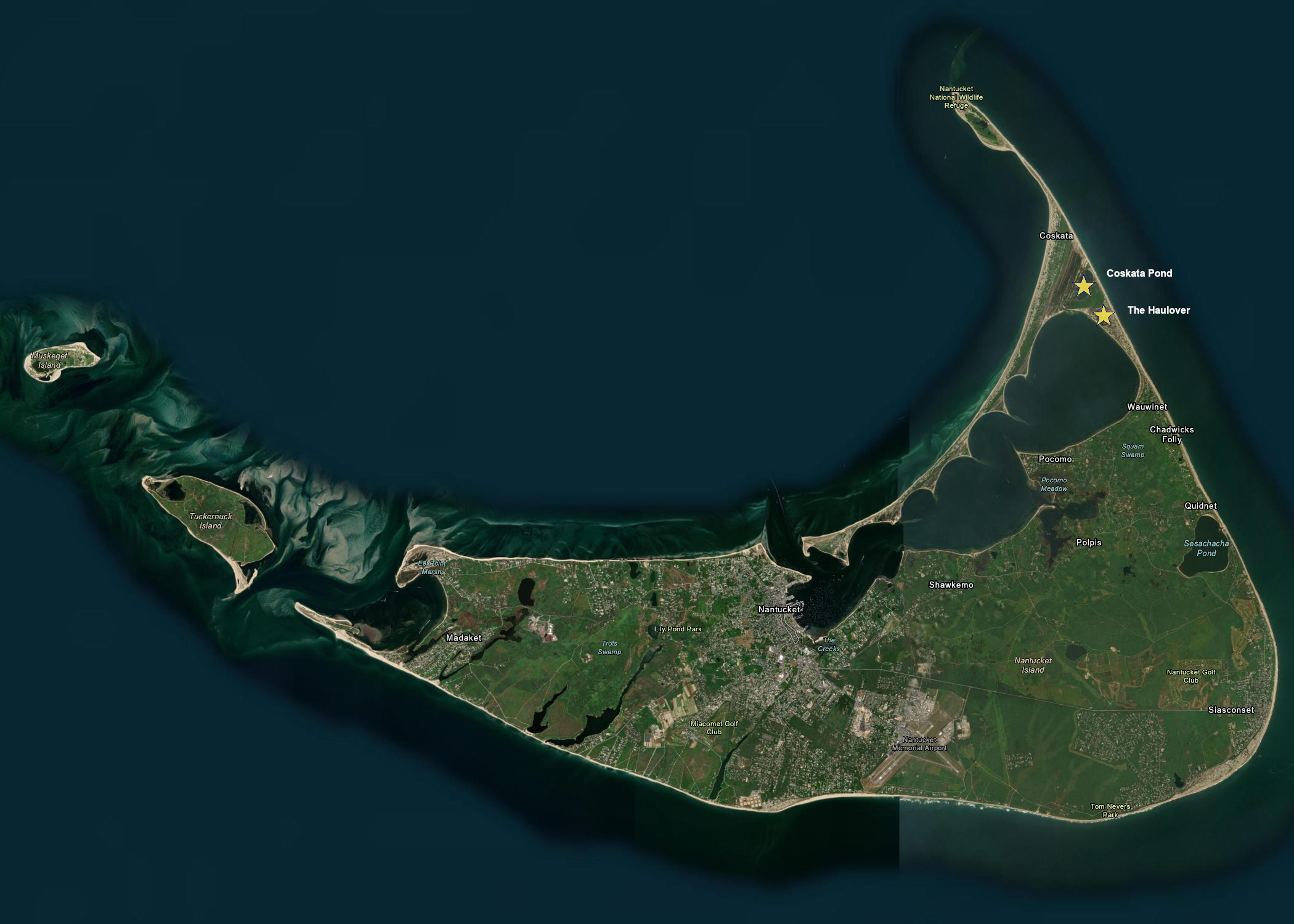
The two areas that will be focused on for this project are the Haulover and Coskata Pond.
Previous Research and Data Collection
By nature, barrier beaches are sand-based dynamic systems that constantly migrate, erode, and grow with the tides. As sea level rises, it is crucial to understand both how our barrier beaches have changed in the past, and how they will respond in the future.
In December of 1896, a significant storm on Nantucket caused a breach at The Haulover, allowing water to move freely between Nantucket Harbor and the Atlantic Ocean. The resulting inlet remained open for around 13 years before closing naturally from sand accretion (build up) along the east side of the island. Sea level rise increases the chance of another breach in the future.
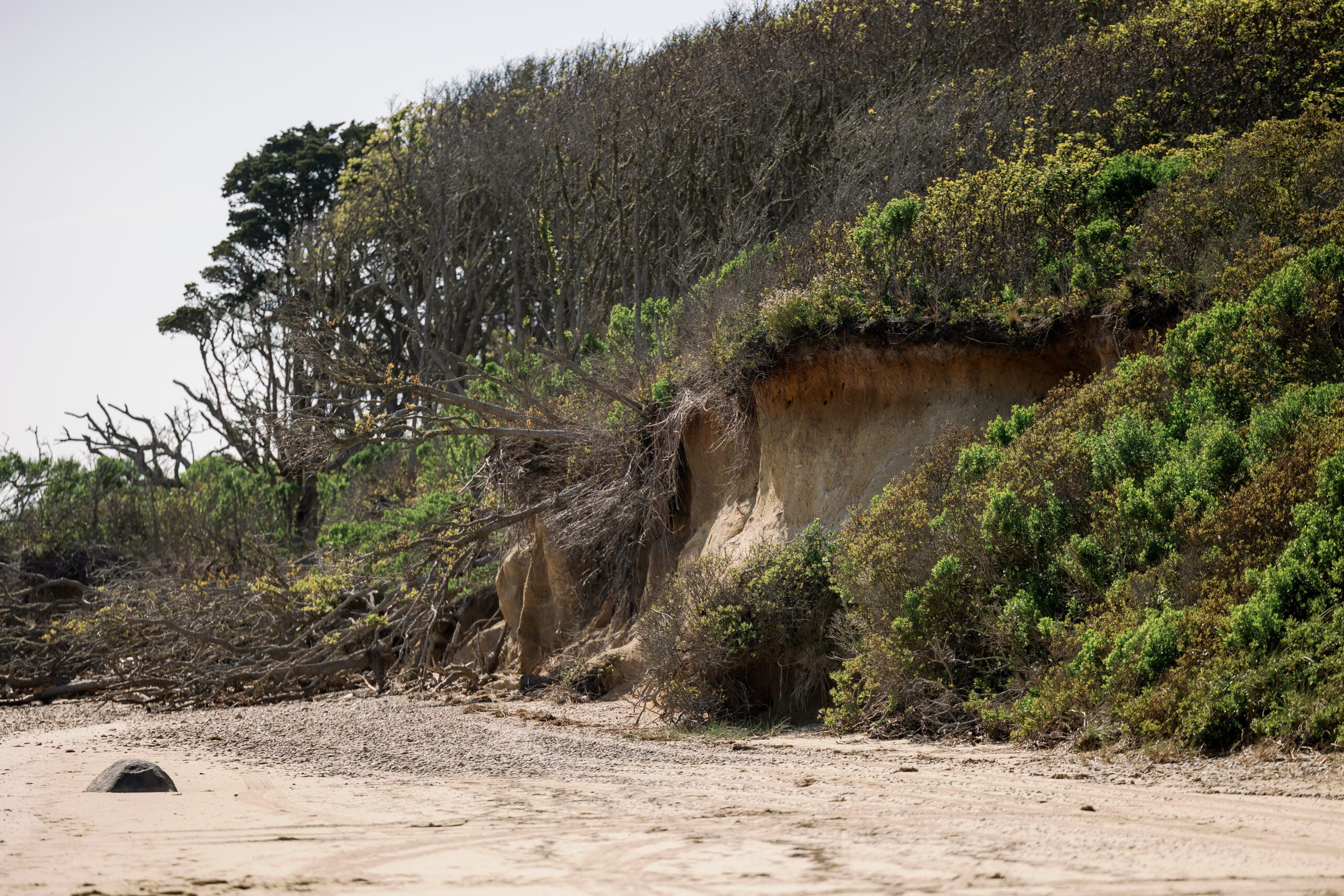
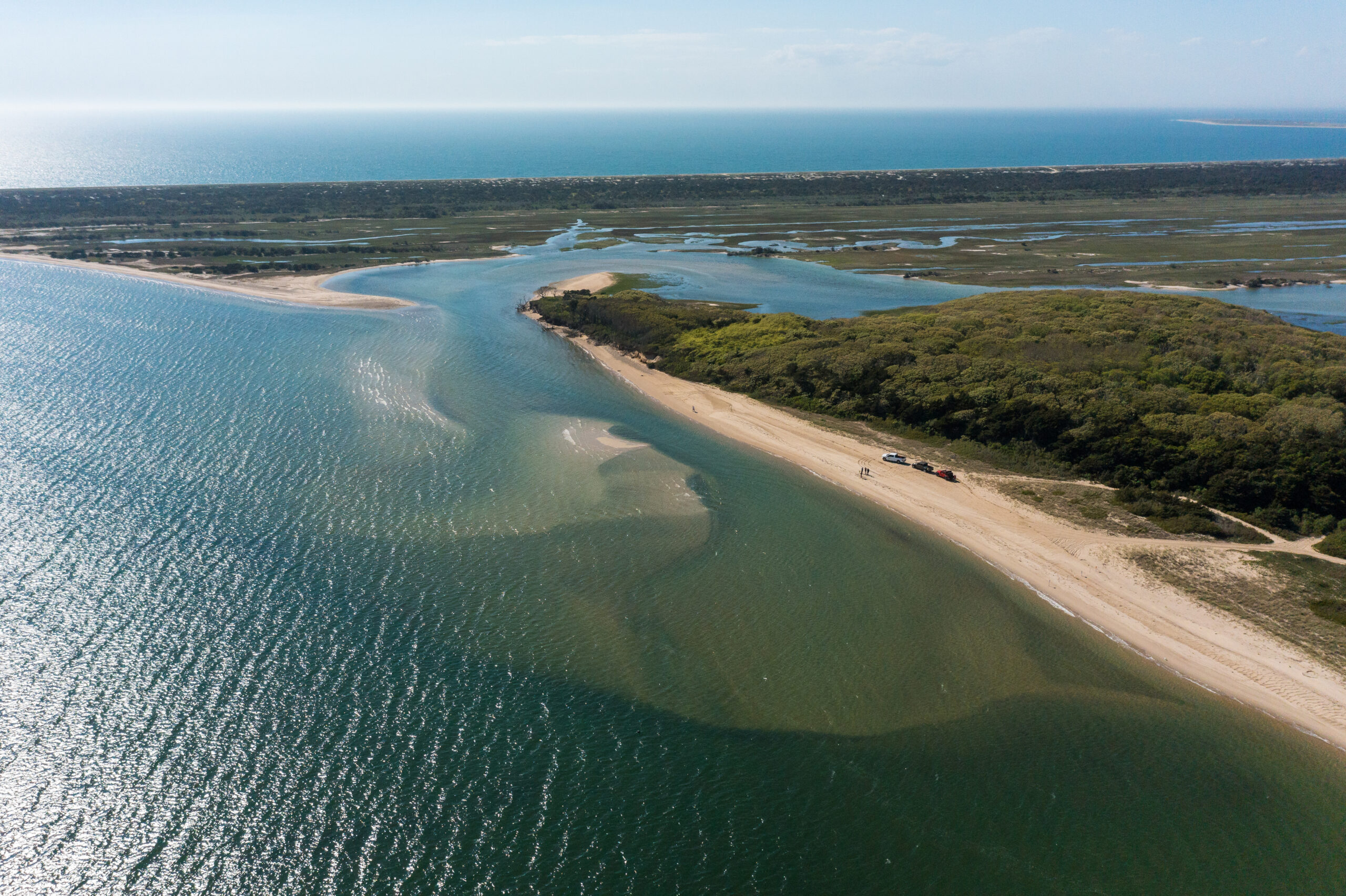
In 2022, The Trustees and NCF worked with Woods Hole Group (WHG) to carry out in-depth assessment and site prioritization for restoration along the Refuge. We identified the Haulover and Coskata Pond as the two sites on the refuge most vulnerable to breaching while also being key public access sites to the Refuge. Given the previously stated history and the projected impacts of climate change including sea level rise, erosion, and storm intensity, The Trustees and NCF are prioritizing these sites.
While working to identify these critical sites, the organizations also worked with researchers at Boston University to carry out an analysis of historic shoreline change and create a hydrodynamic model to understand the effect of sediment transport, tides, and waves on the refuge now and in the future. This modeling will give us a tool to better understand how a new breach at the Haulover could impact the Harbor and Nantucket.
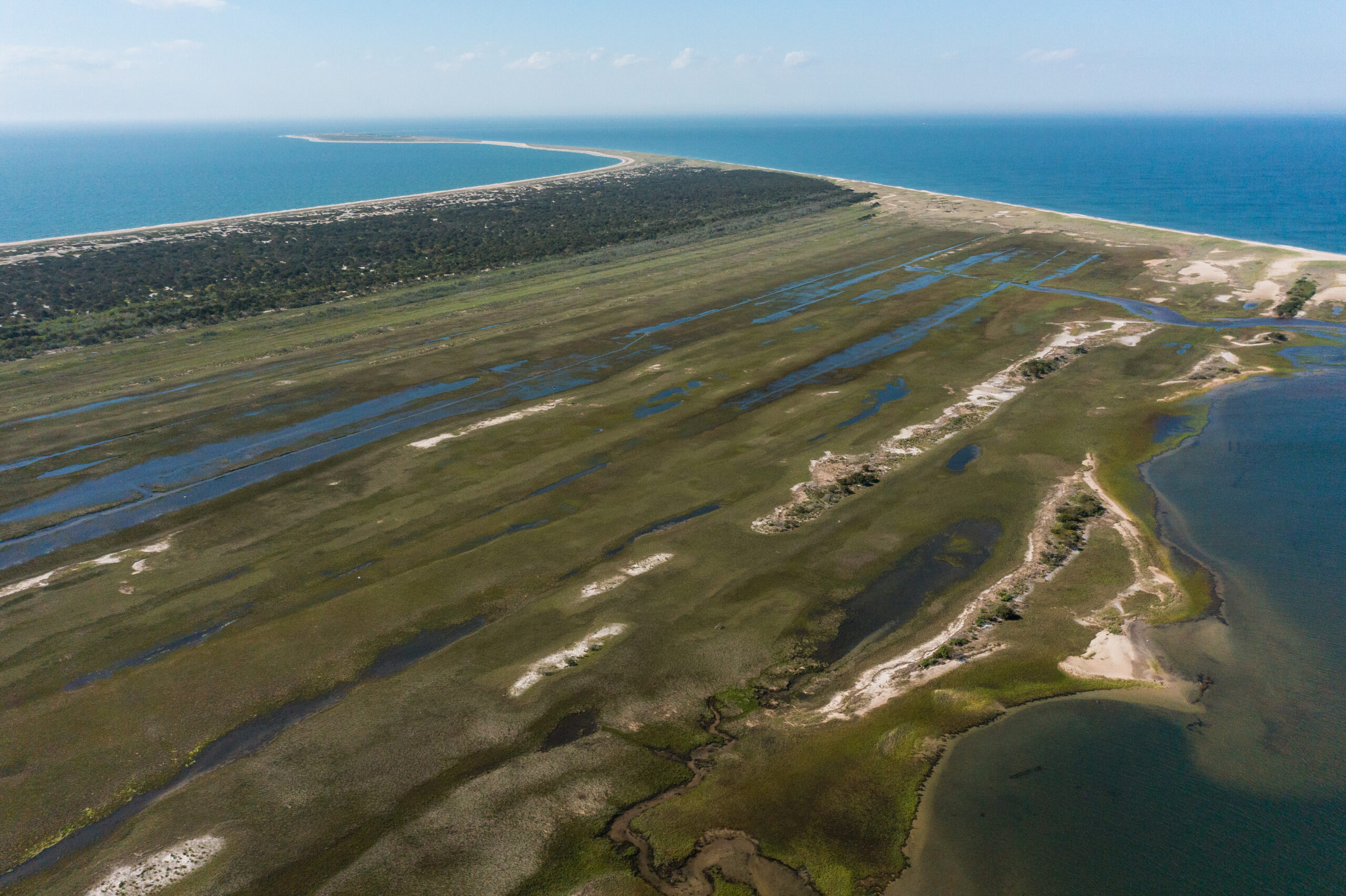
Currently on the Refuge
In the next step of our collaboration on the Refuge, The Trustees and NCF have hired a team of consultants from GZA GeoEnvironmental to examine the potential for resilience project options at Coskata Pond and the Haulover. Utilizing the 2023 NFWF funding, this next step in the project will examine in-depth the feasibility of increasing resilience on the barrier beach system, help NCF and The Trustees select techniques for each site, and begin preliminary project design. We want to answer the question: how can we increase resilience on the Refuge and maintain long-term access through nature-based restoration solutions?
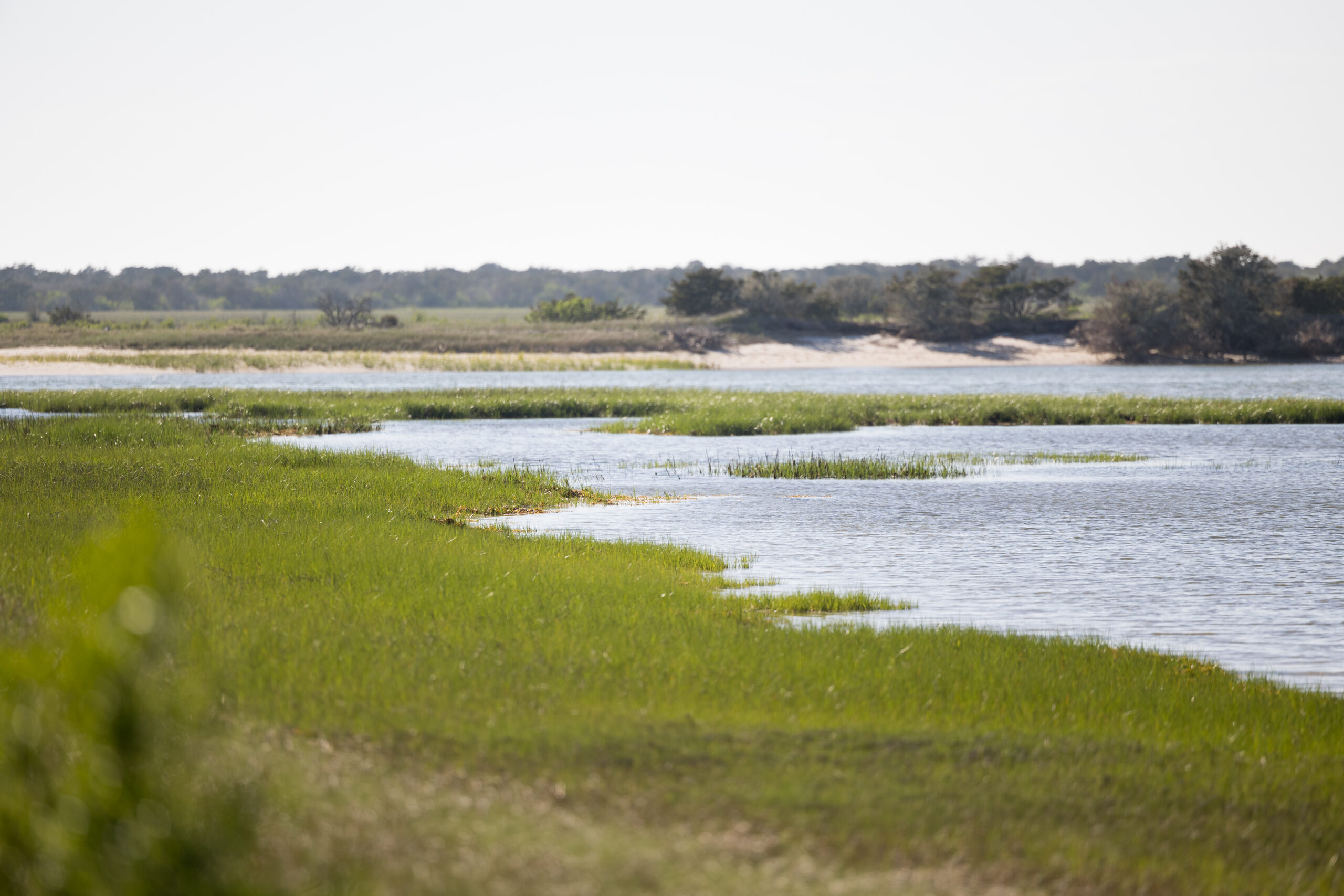
What can you expect?
The goal of the Trustees and NCF is to work with nature to design projects that provide long-term resilience solutions. The team is less interested in short-term and costly sand nourishment unless we can pair the work with other resilience building techniques to also improve habitat and restore natural processes.
We strongly believe that the public is an important part of the process of protecting this spectacular landscape. Please join us by taking a brief survey on how you experience the Refuge.
We invite you to join us at our upcoming community meeting on September 12th, 2024, at the Nantucket Public Safety Building – the meeting will be in person and virtual. Stay tuned for more information to learn about the progress of the project and give your input on the future of the Refuge.
